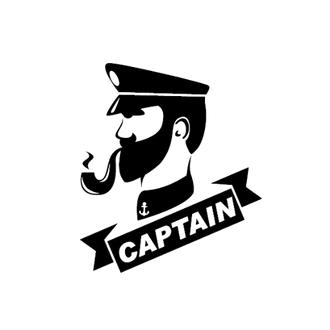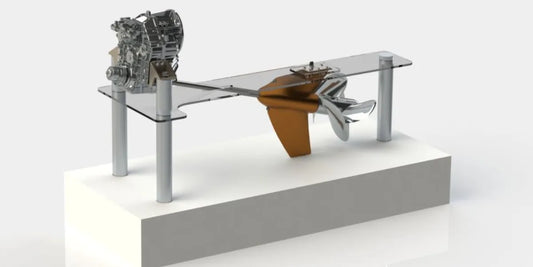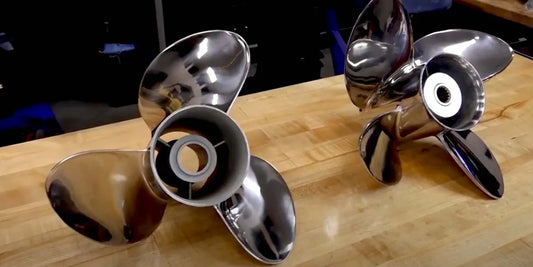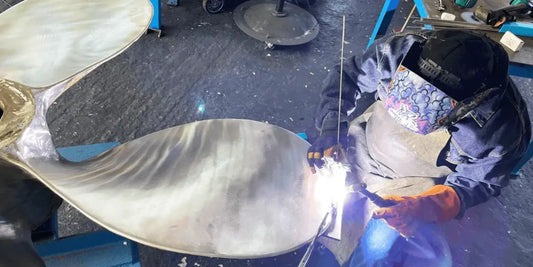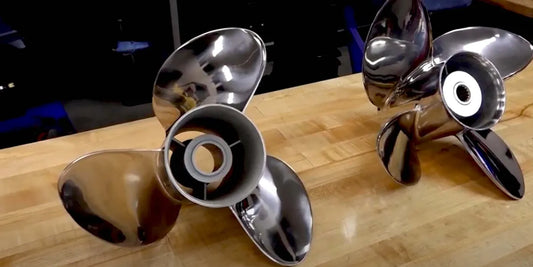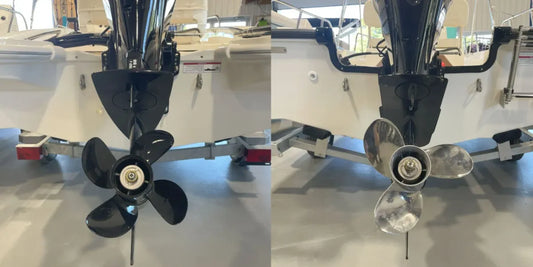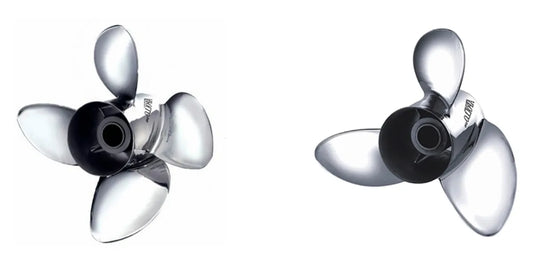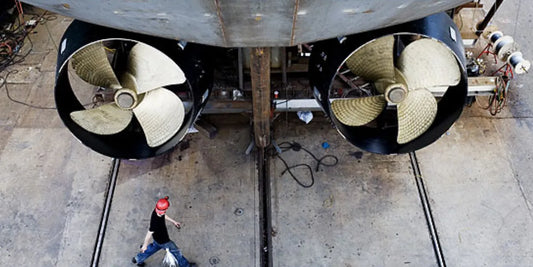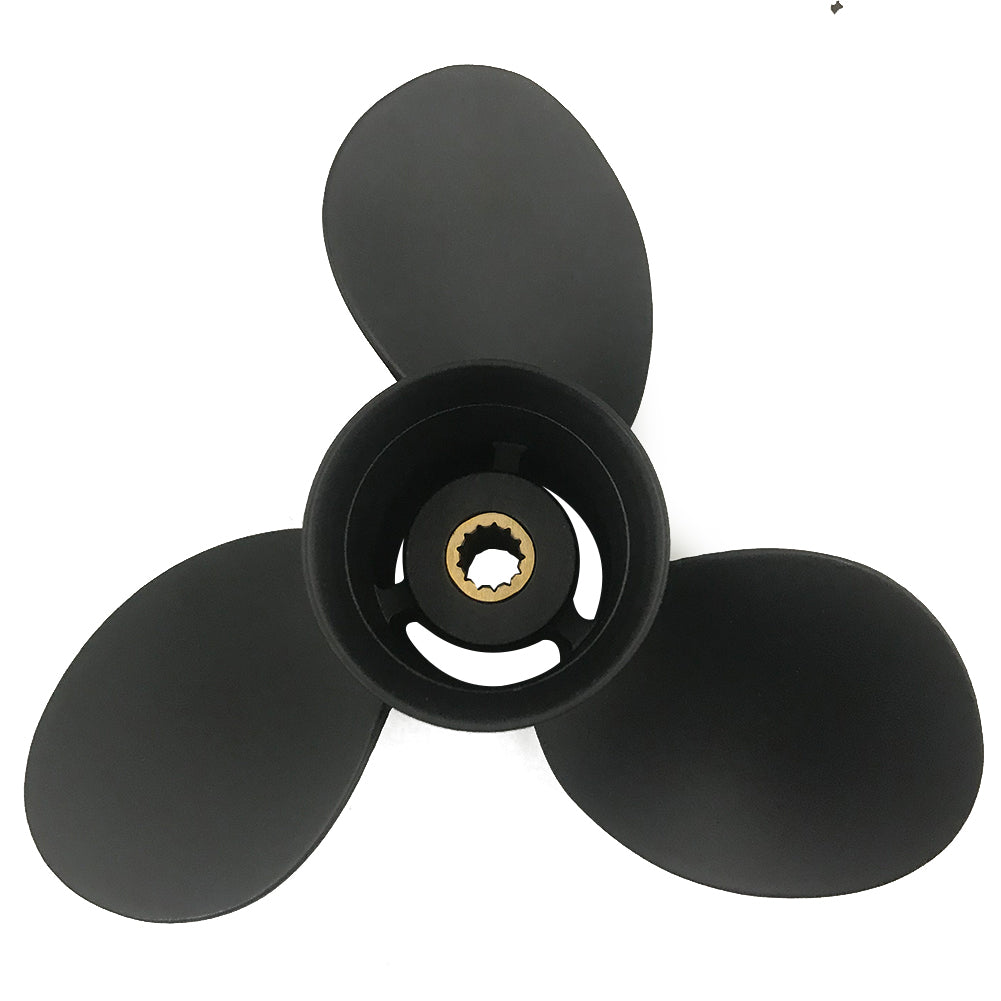There are only a handful of decisions as crucial to maximizing the performance of your boat as choosing the right propeller. Are you looking for speed, better fuel economy, or just plain fishing? Understanding the differences between a four-blade and a three-blade propeller is essential. Each has advantages concerning your boating style, boat type, and specifications of performance. This guide will cover those significant differences in detail and provide actionable insights, enabling you to make informed decisions. After this article, you will know which propeller best fits your boat and has an impact on the whole boating experience.
Understanding Propeller Basics

What is a propeller?
The propeller is the device that rotates on a shaft, producing thrust equal and opposite in direction to that of forward movement of the boat, thus rendering it the final instrument of motion of the vessel. A propeller typically has two or more blades that radiate from a central hub, with the blades pitched to generate lift during their rotation. The backward discharge of water by the propeller is responsible for producing thrust that propels the vessel forward. Propellers are designed according to hydrodynamic principles that ensure optimal results under the given set of operating conditions, particularly in terms of speed and fuel efficiency.
The propellers come in various configurations: the number of blades, pitch, diameter, and material. Blade counts usually range from two to five, with more blades providing a smoother ride, albeit at a slight efficiency penalty. Pitch is how far a propeller would move through water in one complete revolution; the diameter is the diameter of a circle traced by the blade tips. Materials, primarily aluminum and stainless steel, offer different characteristics of durability and performance. Stainless steel is chosen for performance applications and blades where strength and resistance to deformation are of utmost concern.
Modern, contemporary boat propellers have been made specifically to meet the needs of a particular type of performance or make of vessels. High-performance speedboats could use a propeller with a relatively high pitch to gain acceleration and maintain their top speed, whereas heavier and slower boats rely on a larger diameter and greater surface area on the blades to exert the necessary thrust. With this knowledge, a boat owner has the ability to choose an ideal propeller that best suits their vessel for optimal performance, fuel consumption, and overall handling.
A Propeller in Their Own Right: 3-Blade vs 4-Blade
When choosing between 3-blade and 4-blade propellers, it is essential to understand what makes them unique and their applications in the real world. The 3-blade propeller has traditionally had a reasonably wide acceptance due to its efficiency and its ability to provide good performance in terms of top-end speed and acceleration. On this count, it best suits a lighter boat or some vessel whose emphasis is, for instance, on powerboats, with a focus on high-speed performance.
In comparison, 4-blade propellers typically offer more thrust due to their larger surface areas. They offer improved handling and enhanced performance in heavy-load situations. They are best when it is rough and are mainly used for towing, water sports, and vessels of a heavier weight class, where issues of stability and maneuverability become paramount. Additionally, 4-blade propellers tend to provide better performance at lower speeds and reduced vibration, thereby increasing smoothness and ensuring a quieter experience.
It is a choice dependent on the vessel's requirements. For example, 3-blade propellers might provide more top speed, while 4-blade propellers offer more mid-range power and efficiency. Hence, by considering criteria such as the weight of the boat, its intended use, and expectations for performance, boat owners can determine which propellers are best suited for their vessel, thereby achieving good results on the water.
Advantages of 3-Blade Propellers

Performance Characteristics of 3-Blade Props
Commonly known as speed props, less drag is generated underwater in comparison with other 4-blade propellers, thus allowing a higher top-end speed. They work well with lighter boats or vessels that require strong acceleration and fast cruising speeds.
Thirdly, they are used for handling and maneuvering applications, wherein the lower surface area bears less resistance, to the advantage of fuel economy at cruising speed. Performance testing across a range of boating applications has proven these props to be the best for outboard and sterndrive engines, with a thrust maintained consistently at higher RPMs.
Yet it is worth mentioning that while 3-blade props are usually great for top speeds and acceleration, the price may be a slight compromise in power and stability when extra load is applied or under stressful conditions, such as rough water. When selecting a suitable propeller arrangement, consider the specific needs of your boat, such as weight distribution and its intended use.
Fuel Efficiency with 3-Blade Propellers
From the eclecticism of fuel efficiency, 3-blade propellers hover fairly nicely between the pendulum swing of performance on one side and economy on the other, exceptionally well most of the time. Design-wise, these props were conceived to favor less drag while providing enough thrust to keep the cruising boat speed within attainable ranges without overburdening the parent engine. This balance frequently yields less fuel consumption at constant speeds than other configurations, thus making it a standard choice for recreational boating, fishing cruises, and all applications under medium load.
Additionally, advancements in material technology and propeller engineering have increased the aerodynamic and hydrodynamic efficiency of the 3-blade class. Innovations incorporated into the blades include cupping or reaming to enhance fuel performance, which is achieved by reducing slippage and the flow of water around the propeller. While such design features significantly improve fuel consumption in the mid-speed range, the final mileage ultimately depends on factors such as the engine's tuning, the boat's hull design, and the proper matching of propeller size. Ensuring that you get the correct relative pitch and diameter for your particular boat and engine will provide better fuel efficiency in the long run and reduce the strain on the motor.
An emphasis should be placed on fuel-saving priorities versus performance needs by a vessel. 3-blade propellers under heavier loads or lower speeds may, in theory, burn a little more fuel than 4-blade ones, where greater blade surface area may add to propulsion efficiency. However, in most normal boating scenarios, their sleek design offers good fuel efficiency while providing great speed and thrust potential, thereby making them versatile for a wide range of watercraft types.
Best Applications for 3-Blade Propellers
3-blade propellers are popular in applications where a balance of speed, thrust, and fuel efficiency is required. These propellers, in all probability, are designed for recreational boats, enabling activities such as waterskiing or wakeboarding, which demand high swimming speed and acceleration to beat. They are also at their prime when working with lightweight speedboats or when powerboats are designed to maneuver with that much finesse in open waters.
For some types of fishing, varieties of 3-blade propellers are the favored alternative, as they allow the boat to cruise at an even and efficient speed over long distances, thereby actively reducing engine fatigue. They are also used whenever it is essential to minimize drag in the water, such as in competitive motorboating or leisurely cruising in calm to moderate conditions. Since it offers lots of flexibility and dependable performance, the 3-blade design continues to be in demand among boaters who seek to venture out into any aquatic environment adequately.
Advantages of 4-Blade Propellers

Performance Characteristic of 4-Blade Propellers
Propellers with four blades are designed to deliver solutions for a wide range of boating scenarios. One of their distinctive traits is their ability to create astounding thrust at lower speeds. This is primarily useful for towing, water skiing, wakeboarding, or any other single application where control and power are essential. In addition, planes with the 4-blade design generally have superior grip in the water, resulting in greater handling and stability, especially when encountering rough seas or unpleasant weather conditions.
The main advantage is that the 4-blade propeller maintains performance consistency while better handling vibration and cavitation issues than the 3-blade variants. Boats with 4-blade propellers accelerate more effectively and provide a better bite in tight turns, making them sought after in applications that demand responsiveness and maneuverability. They compromise slightly on high-end speed compared to their 3-blade counterpart, but make up for it in fuel efficiency and smoothness during cruising.
Statistically, 4-blade propellers are favored by boaters for maximizing performance under heavy loads or in shallow water navigation, where reliability and stability are crucial. It can also help maintain engine stress balance in unfavorable conditions, thereby enhancing the longevity of operation on one hand, while providing an overall better boating experience in various situations on the other.
Stability and Handling with 4-Blade Propellers
The 4-blade propellers are renowned for their stability and handling, particularly in demanding environments. One design feature that aids surface enlargement and propulsion grip helps smooth out maneuvers and guarantees reasonable control for pitching in whirlpool conditions or at lower speeds. This grip is utilized during recreational watersports or towing to resist slippage and is guaranteed to provide good performance. A compromise granted by torque distribution ensures that some degree of good engine functioning is always maintained, compensating for intermittent loads or islands. Among other things, studies have observed that boats fitted with 4-blade propellers generally experience less vibration, thereby allowing for a smoother and more enjoyable excursion for passengers. These benefits favorably influence boating for those seeking improvements in sharper handling and greater efficiency on the water.
Best Applications for 4-Blade Propellers
A 4-blade propeller has been custom-made for these types of boats, where stability, efficiency, and precision are the highest standards. These propellers are problematic for cumbersome ships, such as pontoons, offshore fishing boats, or larger cruisers, as the extra blade surface area provides more thrust and is better able to carry the load. However, such propellers work smoothly while towing wakeboarders, water skiers, or any other towable fun, as they accelerate at a lower pace and provide more power.
They come in handy in rough waters or waves, thereby improving control and minimizing vibrations, so the driver and passengers retain most of their comfort. Fish and leisure boats operating in harsh environments find the greater maneuverability of 4-blade props rewarding, especially when slow and precise adjustments are necessary.
Propellers with 4 blades are essential for vessels that demand a quick hole shot, such as watersports or loaded boats. Situated at a particular RPM, their ability to vary the speed makes for a great balancing act between fuel efficiency and operational economy in specific scenarios.
Comparative Analysis: 3 Blade vs 4 Blade Prop

Speed and Acceleration: Which Takes the Virtue?
Concerning 3-blade and 4-blade propellers, there are clear distinctions in how each affects the speed and acceleration. Generally, 3-blade propellers are designed for higher top-end speeds and quick acceleration, making them a favorite among boats that seek to maximize agility and performance. Less drag from the water means faster rotations and better speed potential with lighter craft and recreational cruising.
4-blade propellers focus on achieving smooth acceleration, with greater thrust at lower speeds. So, they work on the heavy side-that is, for towing, watersports, or just working over some rough waters. While a forgo of certain top-end speeds is expected with 4 blades as opposed to 3 blades, the upside is that mid-range performance and stability are often delivered far better; hence, they guarantee consistent acceleration at heavy loads.
At the end of the day, the propeller to opt for depends on how the vessel will be used; the 3-blade propeller is preferred in cases of high speeds and rapid acceleration. Meanwhile, the 4-blade attains greater effectiveness when steady performance, better handling, and reliable acceleration are required for demanding operations.
Handling and Navigation in Different Conditions
Handling and maneuverability must achieve the performances of a vessel under the consideration of environmental and operational conditions. For instance, in calm waters with little drag, propellers with fewer blades (3 blades) can provide higher speed and agility. But in rough seas, with strong currents, 4-blade propellers with superior grip and less prone to cavitation handle better and provide more stability.
Maneuvering, to a large extent, cannot be done without considering load and vessel size. Thus, heavy loads would require propellers to provide both thrust and control, as the increased load increases the strain on the vessel. The vessel undergoing almost continuous direction changes may need a propeller optimized for speedy and responsive turning.n Understanding these mechanisms allows the vessel operator to determine the right vessel for the specific operations to ensure safety and efficiency in all encountered conditions.
Noise Levels: Three-Blade vs Four-Blade Propeller
Sound levels can vary significantly between two- and four-blade propellers, depending on the application and operating conditions. Generally, four-blade propellers produce slightly less noise when compared to three-blade ones. With the additional blade, the load is distributed more evenly, resulting in pressure fluctuation reduction and cavitation occurring less frequently, the primary parameter in underwater noise. Less cavitation improves acoustic properties, providing greater comfort for passengers, particularly in leisure and luxury vessels.
An idealized instance is a 3-blade propeller operating at high RPM for thrust, with fewer blades carving through the water. At such high RPMs, they become louder, especially when the operation requires quick acceleration or excessive power. These days, with advanced materials and precision design, innovations exist that offer noise reduction to both types of propellers, enhancing efficiency and reducing disruption.
Ultimately, the decision between a 3-blade and a 4-blade propeller lies with the vessel operators. In cases where repressed noise is required for operation, such as with research vessels, yachts, and eco-sensitive projects, 4-blade propellers may prove beneficial. Considering the above attributes and the implementation of modern help, operators can strike an optimum combination of noise reduction and performance efficiency.
Choosing the Right Propeller for Your Boat

Factors to Consider: Boat Size and Engine Power
When I choose a propeller, I always first consider the size of my boat and the power of the engine: these are variables that go hand in hand and significantly affect propeller performance and efficiency. The bigger the boat, the broader in diameter and surface area the propeller must be to handle the increased weight and water resistance caused by the boat itself. Smaller boats, however, suit smaller and lightweight props, as these preserve their nimbleness and speed without straining the engine.
Engine power is so essential in the decision-making process. I examine the horsepower value of the engine and the RPM range to match it with a suitable pitch for the propeller and blade design. If the pitch is too high, the engine won't reach its optimum RPM, and sluggish acceleration will occur, accompanied by poor fuel economy. An extremely low pitch, on the other hand, causes the engine to over-rev, shortening its useful life. I always strive to find a happy medium where the propeller allows my engine to run within its recommended RPM range at full throttle for the majority of my activities with the boat, including leisure cruising, water sports, or heavy hauling.
In essence, picking the right propeller for my boat becomes a tailor-made union between size, engine power, and application. Trial and error, coupled with some professional advice, also come into play in fine-tuning this decision to give one the best feel of performance and satisfaction on the water. Thus, correct considerations can maximize efficiency and enjoyment on my boat riding exploits.
Assessing Your Boating Style and Needs
When assessing the coaching style and needs, the first things I consider are: how do I typically use my boat, and what activities do I most enjoy on the water? For example, if I am mainly cruising for leisure, my considerations might be comfort, fuel efficiency, and a smooth ride. Alternatively, if I water ski or wakeboard, I would regard speed, maneuverability, and power as paramount. Understanding these considerations also helps clarify which boat characteristics should be prioritized in fulfilling decisions, from prop choice to fit-out upgrades.
I next evaluate the frequency of my outings and the environment in which I usually operate. My needs differ when I am mostly in calm inland lakes compared to those who prefer oceans or rough waters. While calm waters can be easier to navigate with slim designs and faster performance, choppy waters demand durable and stable designs. I also consider whether I use my boat for myself, my family, or for relatively large groups, as the weight of passengers affects the boat's performance and handling.
By considering my boating habits, planned activities, and the environment in which I will be operating, I can develop a clear idea of what I need to prioritize. This decision-making analysis will help me make informed decisions that optimize my boat's performance, thereby enhancing the experience for myself and any passengers. Whether I need to develop responsiveness, stability, or fuel efficiency, knowing my style and needs will be paramount to ensuring I derive maximum value and enjoyment from every on-water excursion.
Working with the Professionals for Propeller Selection
It has been incredibly helpful for me to consult with several experts when selecting propellers. This interaction enables me to learn from their technical expertise and understand the practical aspects that govern performance. They take into account the special engine in my boat, my hull design, and intended use to suggest a propeller that will work best for my requirements. With this knowledge, I can be confident that decisions are made based on sound facts and industry expertise.
In addition, these professionals have a range of tools at their disposal: diagnostic tests can assess the current performance of my boat, thereby identifying specific areas that require improvement. Whether it is handling a myriad of issues, such as slow speed, poor fuel efficiency, or erratic handling, their accurate diagnoses put forward tangible solutions. Consultations of this nature have boosted my confidence in my own choices and saved me time and money, as I was able to select the correct propeller for my setup.
Ultimately, having worked with experts has transformed what might have been a chaotic and confusing experience into a relatively straightforward one. Their advice considers a variety of factors unique to me in terms of requirements and goals, which have helped me improve the performance of my boat under different conditions, enhance fuel efficiency, and enjoy the thrill of soaking up sun rays on the lake. The assistance of an expert for me goes beyond being just useful; it is the veritable key to the success of any future endeavors for the betterment of my boating experience.
Reference Sources
-
3 Blade vs. 4 Blade Propeller - Michigan Wheel
Discusses the power, vibration absorption, and suitability of 4-blade props compared to 3-blade options. -
3 or 4 Blade Prop - Boat Talk
Explores the surface area, efficiency, and performance differences between 3-blade and 4-blade propellers. -
4 Blade vs 3 Blade Propeller - The Hull Truth
Highlights the advantages of 4-blade props for low-speed pulling and quick planing, as well as their trade-offs. -
3 Blade Propeller vs 4 Blade Propeller - Boat Design
Examines the efficiency and drag differences between 3-blade and 4-blade propellers.
Frequently Asked Questions (FAQs)
Advantages of Four-Blades over Three-Blades?
From an engineering standpoint, a 4-blade propeller usually exhibits a better holeshot, i.e., reaching its planing speed more quickly than a 3-blade propeller of the same diameter. With additional blade area, the thrust generated is also greater at low revolutions per minute (RPM), i.e., exerting direct pressure against the lower speed of the boat. That is the very reason behind its use in waterski boats that require rapid acceleration. A three-blade prop is more favored at top speeds, however, whereas a four-blade prop fares better at low speeds in terms of performance and fuel economy. At WOT, consequently, the four-blade can keep a more uniform pitch, which leads to smoother rides. Hence, if one prioritizes acceleration and pulling power, they often opt for a 4-blade.
Does the number of blades affect the top speed?
The number of blades can significantly impact the speed potential and fuel economy of propellers. Typically, a 3-blade propeller is capable of greater speeds, as it produces less drag and has a smaller surface area than a 4-bladed propeller. Ergo, a 4-blade prop-type, while being slower at the top end, does offer something in exchange for its speed: better acceleration and stability at high RPMs. For any would-be performer, understanding hull designs and the trade-offs in blade types is crucial. Ultimately, the choice between a 3-blade and a 4-blade propeller depends on the person's usage of their boat and any performance requirements they may have.
Can 3-bladed propellers outperform 4-blade types in some cases?
Performance-wise, there are occasions when a 3-blade prop can surpass a 4-blade one when maximum speed is considered. Generally speaking, less drag means higher speeds with WOT for this particular prop, especially for racing or performance-oriented applications. This higher speed might lead to slower acceleration, with the holeshot being better with a 4-blade. For high-speed cruising or racing, this is likely the prop for you. Again, the specific hull design and desired driving feel are essential considerations when weighing these two options.
How does diameter affect performance?
The diameter of the prop plays a significant role in thrust production and, therefore, in speed and fuel economy. Larger blades have a greater surface area, allowing them to pull more effectively at lower speeds and improve holeshot performance; however, the larger diameter creates drag, which is counterproductive to achieving maximum speed. Smaller diameters might yield higher RPMs, but they may not have the same effectiveness at lower speeds. It is essential to determine the appropriate propeller diameter to match the engine and the boat's purpose for optimal performance.
How does hull design affect the choice between a three-blade and a four-blade prop?
Hull configuration profoundly impacts whether to install a 3-blade or a 4-blade prop, as it influences the planing speed, stability, and operation of the boat. Speedboats and performance-based crafts benefit from the lowered drag of a 3-blade prop to attain top speed. Ski boats and other boats with towing priorities at low speeds prefer the 4-blade because it pulls better at lower speeds, providing stronger holeshots. Understanding the characteristics of your hull design will help determine the best prop configuration for your boat.
What factors should I consider when converting from a 3-blade prop to a 4-blade prop?
When transitioning from a well-known 3-blade prop to a 4-blade prop, one must consider the RPM range, intended use, and current performance of the boat. A 4-blade prop generally accelerates better and provides more stability at lower speeds, but sacrifices some of its slight top speed compared to a 3-blade prop. One should also keep in mind the pitch factor, as a change in pitch can affect the overall performance of your boat. Lastly, concern should be placed on fuel consumption, as some users claim that a 4-blade prop yields extra fuel efficiency, simply because it can better control situations at lower RPMs. Testing the potential options through trials will help users choose the best-fitting one for the application they have in mind.
